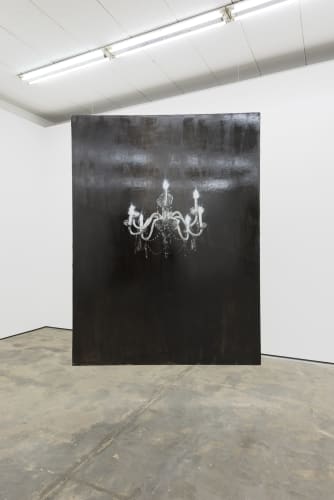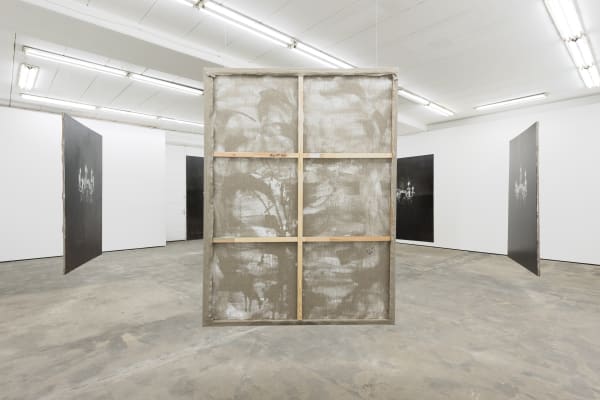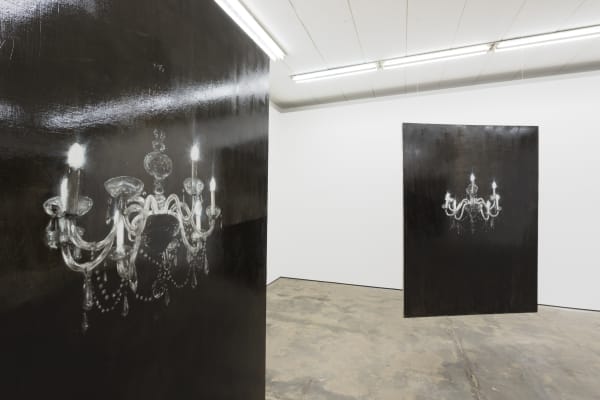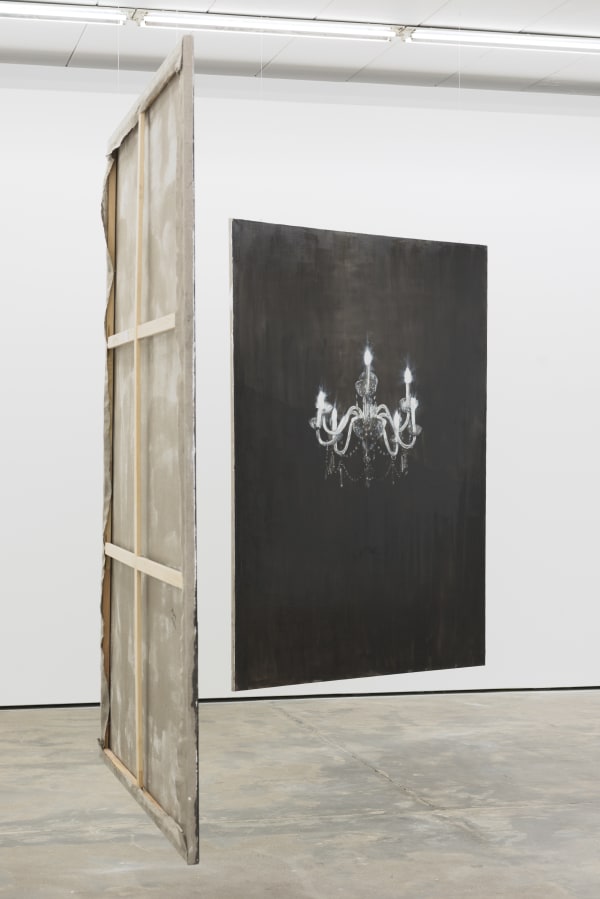Axel Geis – Chandelier
The approach is at once both personal and richly referential. First Axel Geis photographs his own chandelier from seven different angles, then he creates paintings based on the photos — all at the same time and under the time pressure that he finds productive for his work (“otherwise it becomes too tentative”). Looking at the “Chandelier” paintings, you get the feeling you also get after a good meal enjoyed with a great deal of wine when you try to keep your head from spinning as you rise and walk around the table. The eyes reel. Geis’s modest but nonetheless perceptible modifications of perspective from painting to painting evoke the Illusion that it is not we viewers who move, but the chandelier itself. But this has nothing to do with intoxication in the dining room.
“Torqued Chandelier” is the name of a 2005 work by the Canadian artist Rodney Graham that furnished the motif for Geis’s most serial and, strictly speaking, conceptual work to date. In Graham’s film, sumptuously shot on 35mm stock, nothing is visible except a spinning chandelier. With “Chandelier”, Axel Geis turns the whole thing around. For the seven paintings hung on the walls reflect a chandelier that actually is not there — and that lacks just one candle, so that the various perspectives can be better discerned. Whereas Cubists unite all views of an object in one picture, Geis distributes them among several pictures, thus positioning the viewer at the hub in the truest sense of the word.








